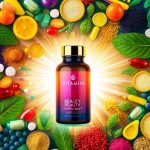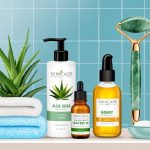How to Get Rid of Dark Spots on Face Fast: Dermatologist-Approved Skincare Solutions
Brightening Treatments and Ingredients
Brightening treatments center on ingredients that both fade existing spots and help stop new pigmentation from forming. Hydroquinone is the strongest prescription-based ingredient for stubborn cases.
Regulated over-the-counter formulas with turmeric, licorice extract, or vitamin C offer gentler alternatives. These are especially useful for sensitive or post-inflammatory skin.
Ingredients like azelaic acid and tranexamic acid disrupt excess melanin formation, lightening dark patches over continued use. Kojic acid, derived from fungi, and licorice extract, a plant-derived compound, both offer additional brightening support.
Choosing a brightening serum that combines such actives with antioxidants ensures the skin barrier remains protected during the lightening process. Many brightening treatments are formulated for use both day and night, and are proven effective for a range of skin tones, as detailed in guides to dermatologist-recommended brightening treatments.
Night Creams for Hyperpigmentation
Night creams for hyperpigmentation cater to the skin’s repair cycle, maximizing the efficacy of dark spot correctors while minimizing irritation. These creams frequently contain retinol, niacinamide, and peptides to accelerate cell turnover, gently fading persistent marks overnight.
The inclusion of kojic acid, licorice extract, and vitamin C in night formulations offers a multi-pronged approach against uneven skin tone. Night creams may be less likely to cause sun sensitivity, allowing active ingredients to work uninterrupted.
Textures are typically richer, providing moisture and barrier support while the correctors perform their function. When choosing a night cream, users should look for clinically-backed formulas that highlight key brightening ingredients and pose low risk of irritation.
Consistent nightly use, as part of a broader dark spot treatment plan, is encouraged by leading dermatologists and skincare publications.
The Essential Role of Sunscreen
Consistent sunscreen use is one of the most effective ways to prevent new dark spots and minimize existing discoloration on the face. SPF protection, when properly chosen and applied, can significantly reduce UV-related pigmentation and support other skincare treatments.
How Sunscreen Prevents Dark Spots
Daily sun exposure is a key driver of hyperpigmentation and sun damage. Ultraviolet (UV) rays from the sun trigger melanocytes in the skin to produce more melanin, leading to dark spots, melasma, and age spots.
Even minimal exposure, such as walking outside briefly or sitting near windows, can worsen dark spots over time. Broad-spectrum sunscreen shields the face from both UVA and UVB rays, which are responsible for both immediate and long-term skin damage.
By reducing this UV exposure, sunscreen helps prevent dark spots from forming and keeps existing spots from becoming more visible. Using sunscreen allows the skin to repair itself from existing hyperpigmentation.
Products containing iron oxide, often found in tinted sunscreens, give extra protection against visible light—a lesser-known but potent source of pigmentation for deeper skin tones. Regular application reduces inflammation, lessens new pigment formation, and supports clinical treatments for dark spots.
Choosing the Right Broad-Spectrum SPF
Not all sunscreens offer the same level of protection against sun damage. For those targeting hyperpigmentation or dark spots, dermatologists recommend using a broad-spectrum sunscreen with an SPF of 30 or higher.
Broad-spectrum labeling means the product protects against both UVA (aging) and UVB (burning) rays, both of which aggravate dark spots and melasma. A higher SPF, such as SPF 50, provides an extra layer of security for those with increased sun sensitivity or anyone undergoing skin treatments like chemical peels or laser therapy.
Tinted sunscreens, formulated with iron oxide, help block visible light from screens and indoor lighting, making them especially valuable for deeper skin tones trying to address hyperpigmentation. Look for sunscreens that contain antioxidants, are water-resistant, and suit individual skin types (e.g., non-comedogenic for oily skin, moisturizing for dry skin).
Lightweight textures and mineral formulas are often preferred for daily wear, ensuring the product doesn’t clog pores or irritate sensitive skin. See more about sunscreen selection and its impact on dark spot prevention at Vogue.
Daily Application for Effective Protection
For sunscreen to protect against sun exposure and prevent hyperpigmentation effectively, it must be applied daily and correctly. Most dermatologists advise applying sunscreen every morning, regardless of whether the day appears cloudy or if most time is spent indoors.
UV rays can penetrate windows and clouds, contributing to ongoing sun damage.
Proper Application Checklist:
- Use a nickel-sized amount for the face and neck
- Apply 15-30 minutes before sun exposure
- Reapply every 2 hours when outdoors or after sweating and swimming
Consistent daily use, especially in combination with other brightening treatments, helps limit the reappearance and darkening of dark spots over time. Missing even a day of sunscreen can undermine progress made in reducing hyperpigmentation.
For extra support and tips on application routines, find guidance at Colorescience.



